site search
online catalog
1840s U.S. ARTILLERY PRIMING HORN
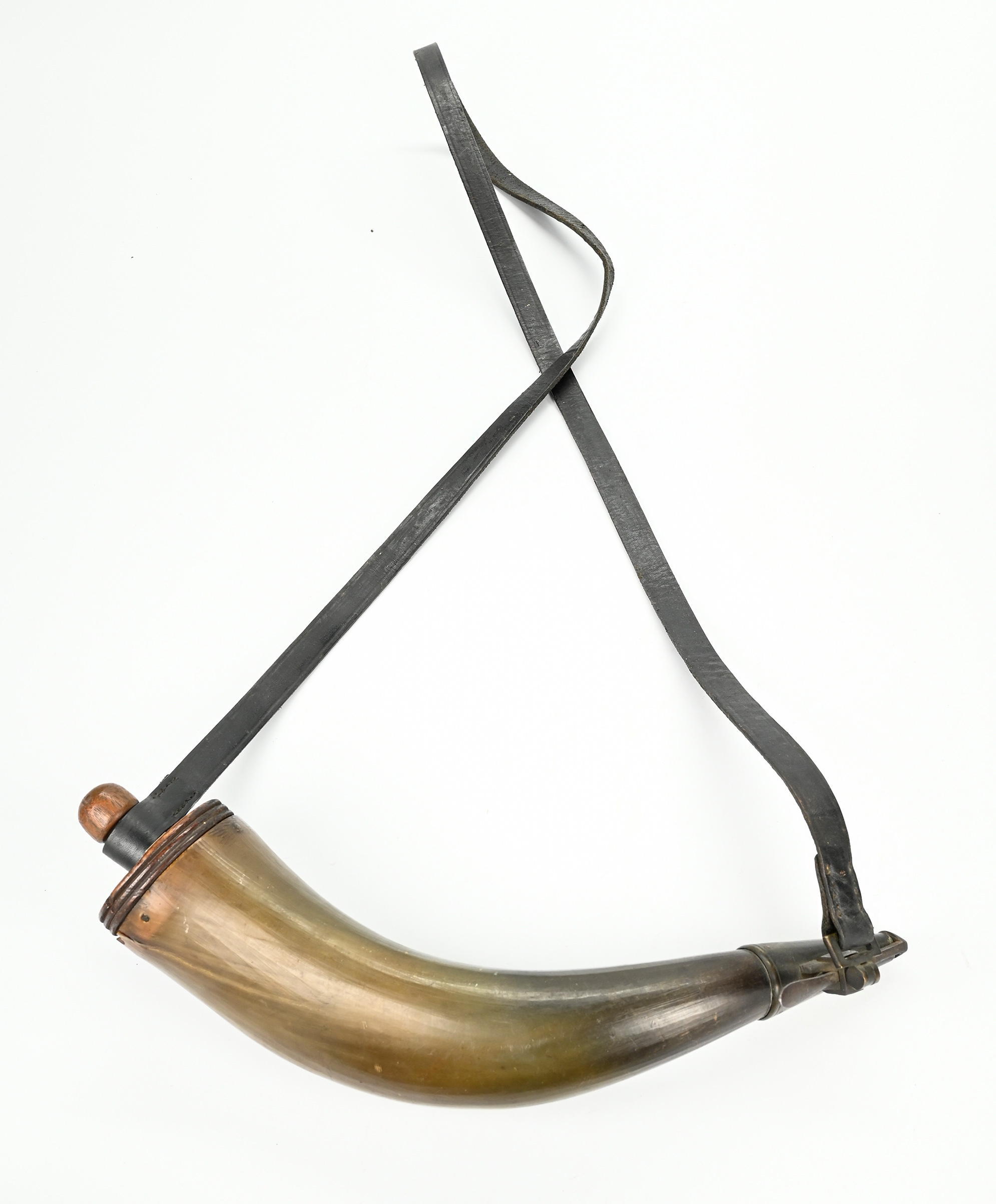
Hover to zoom

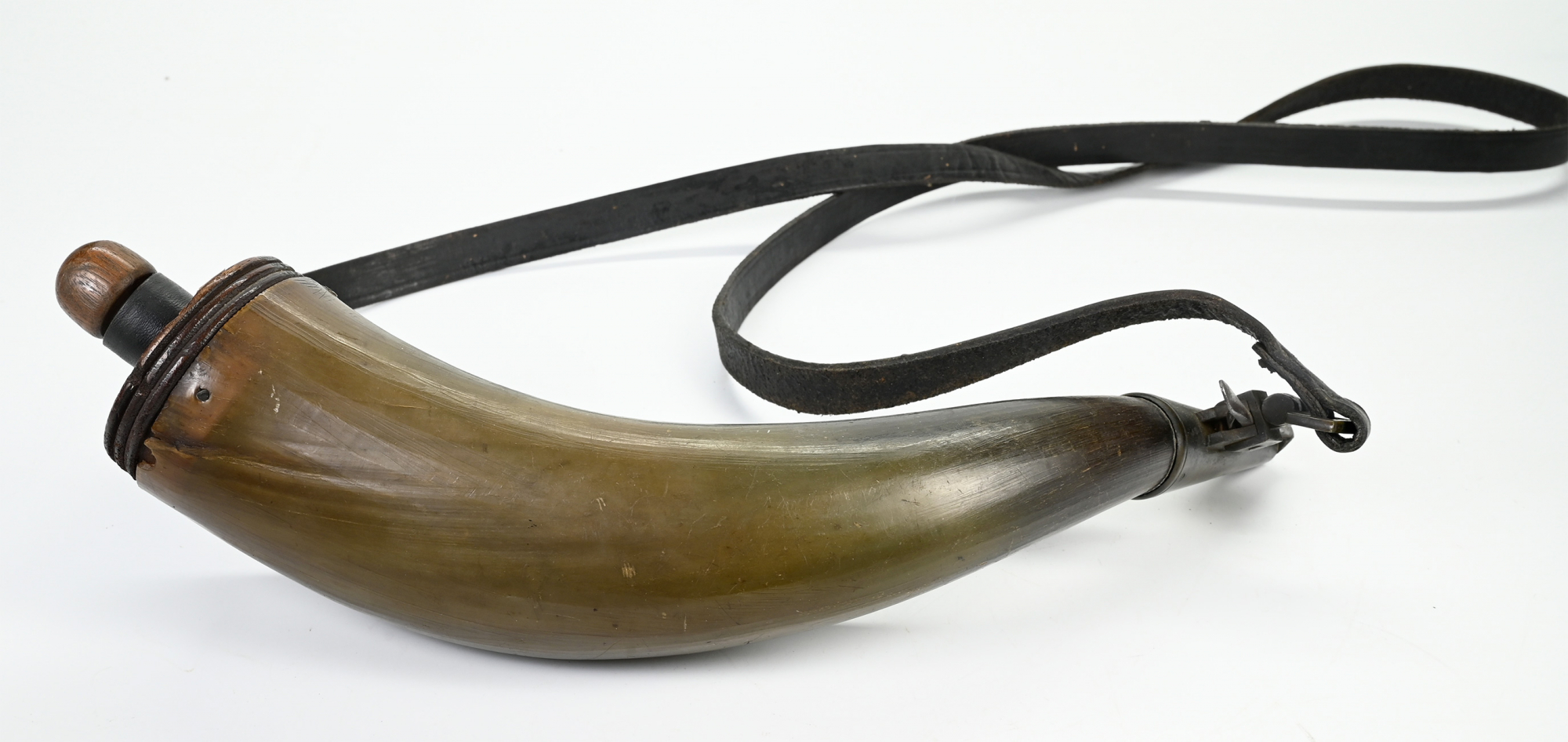
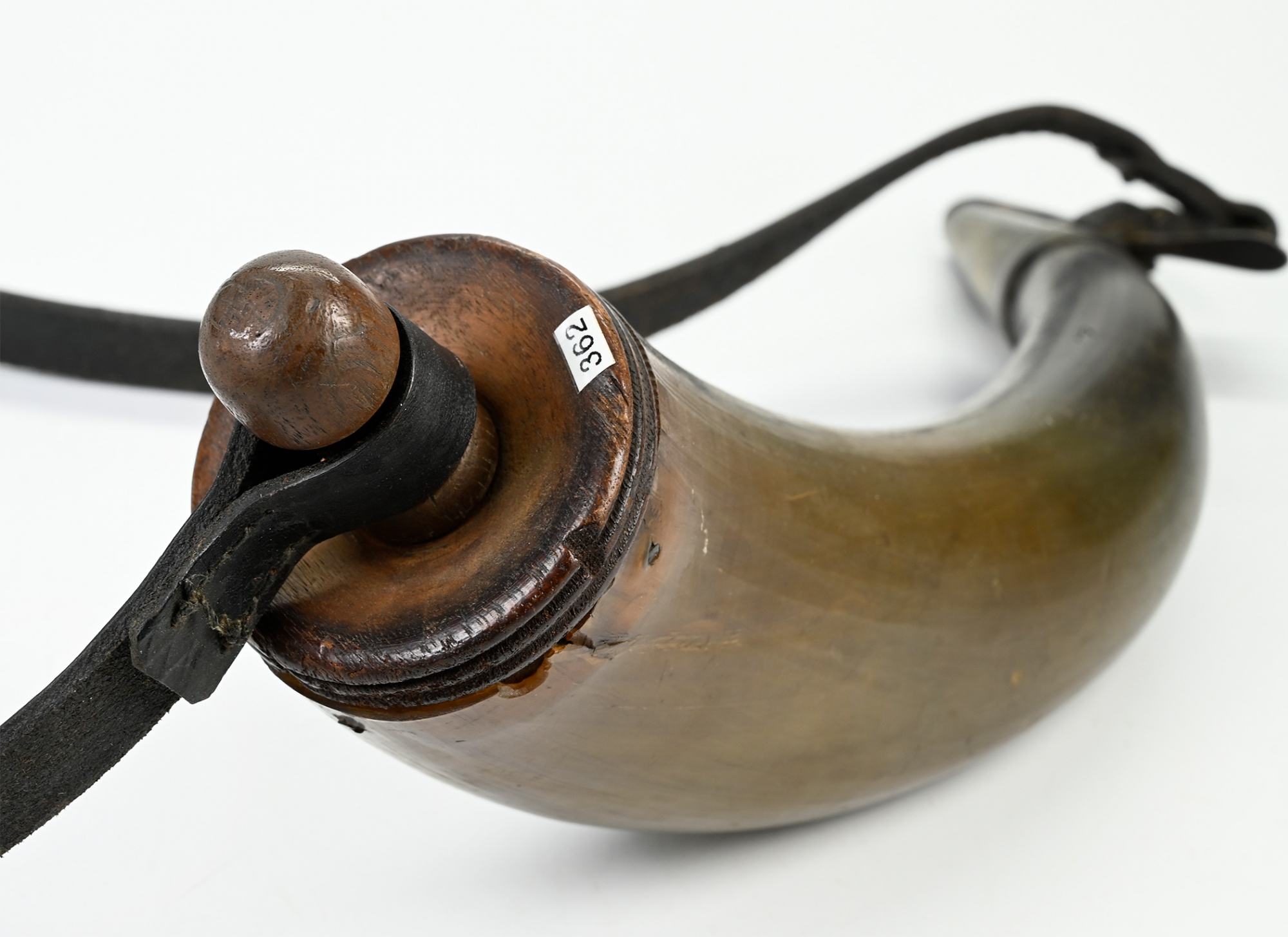
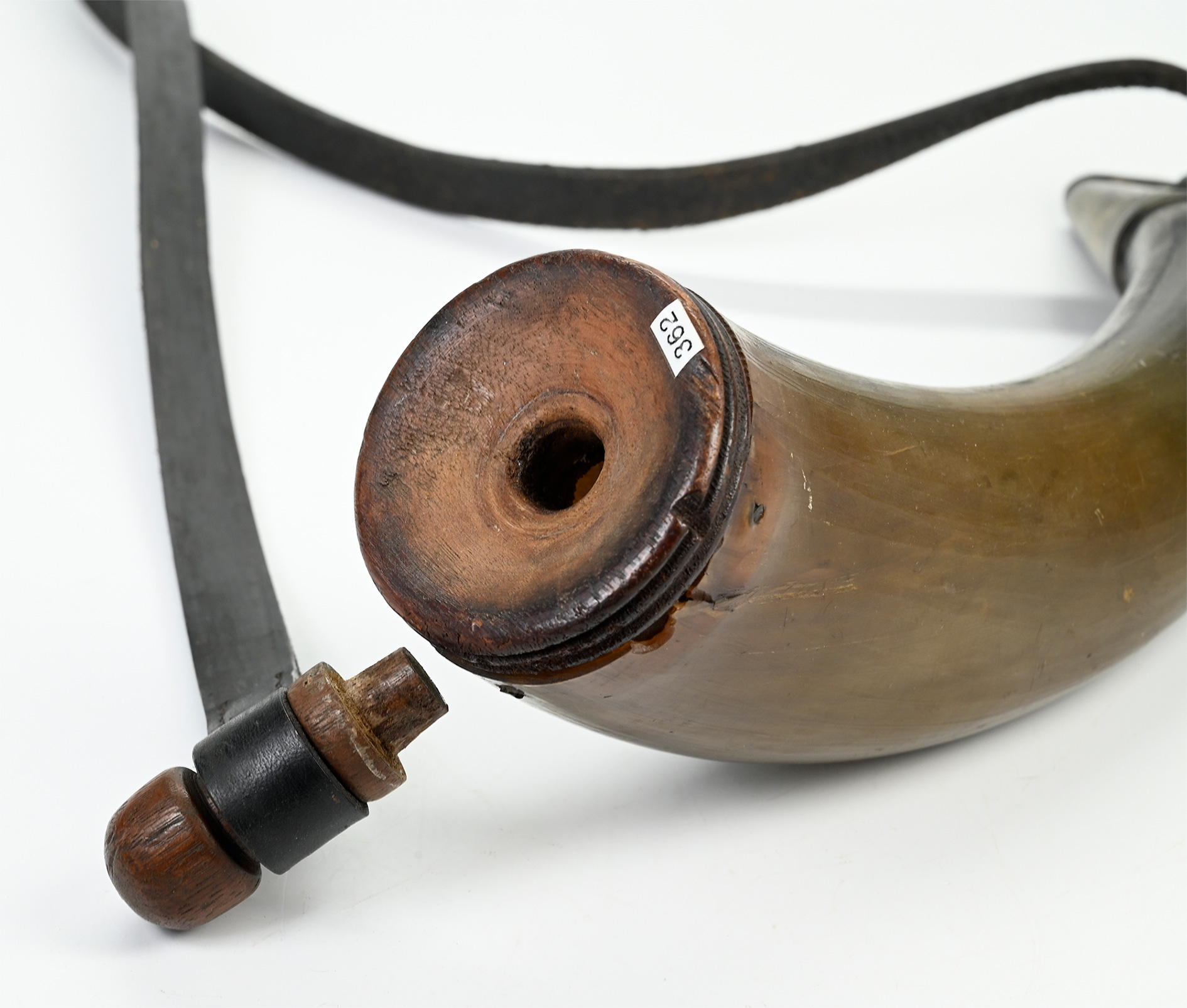
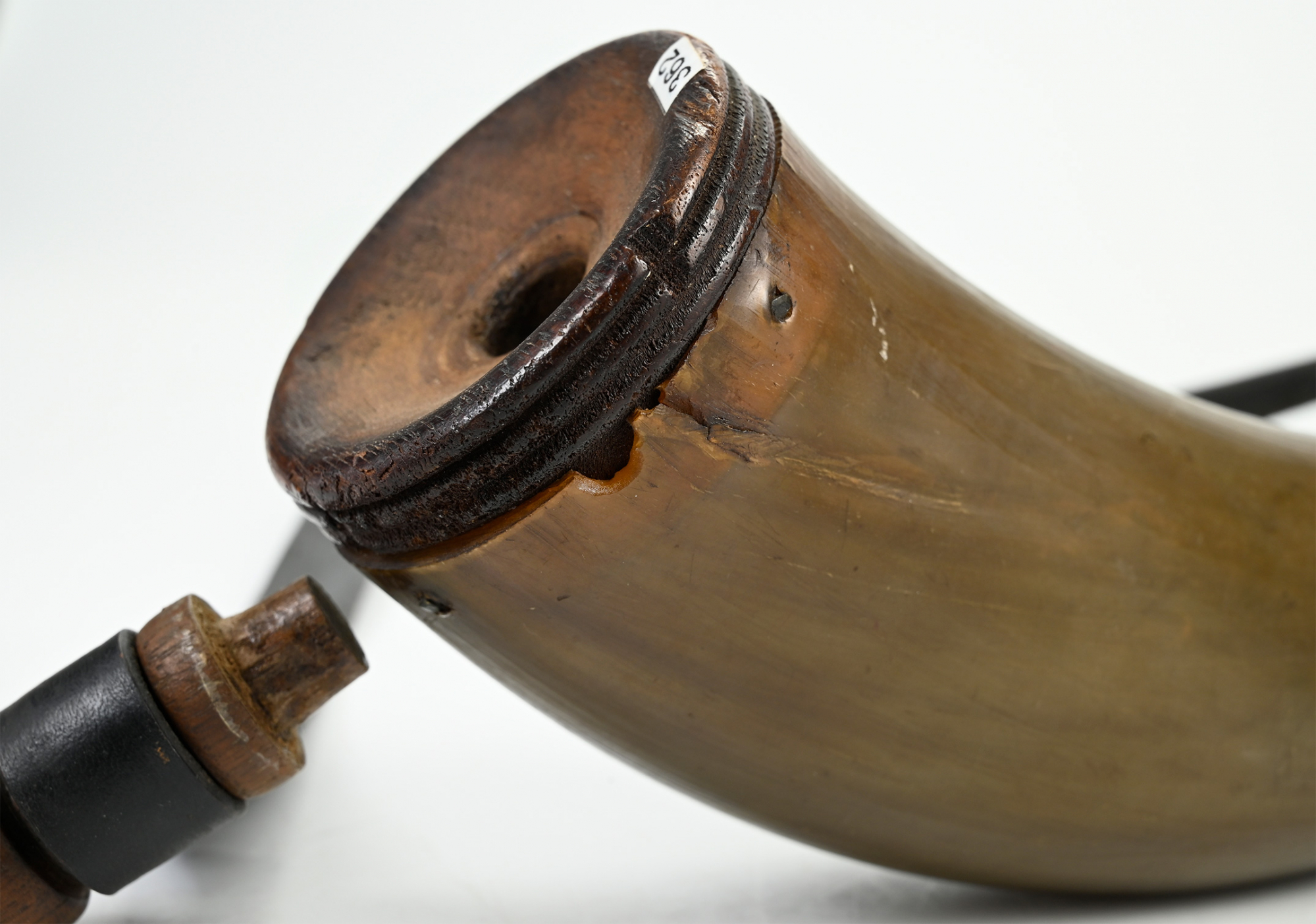
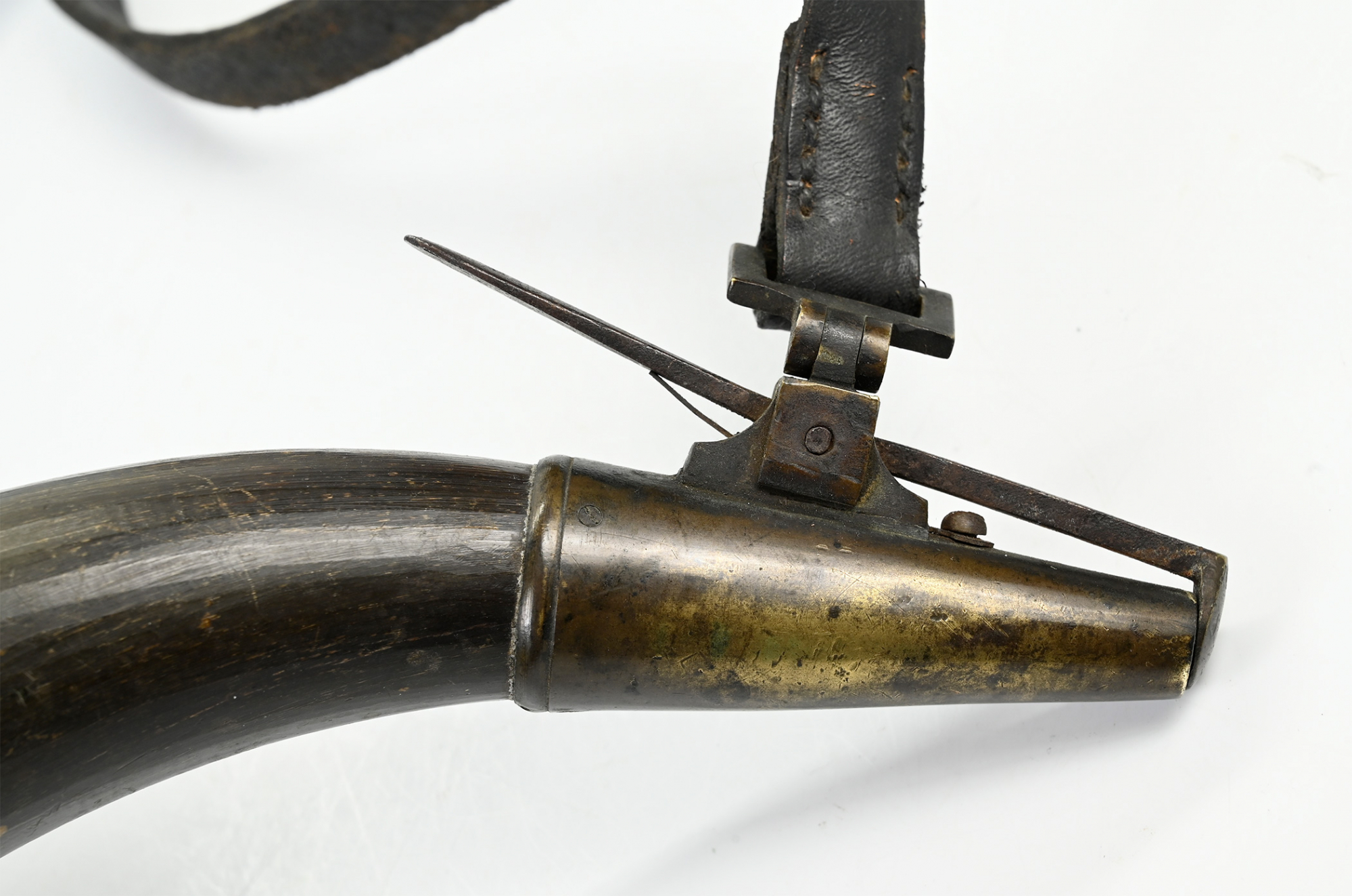
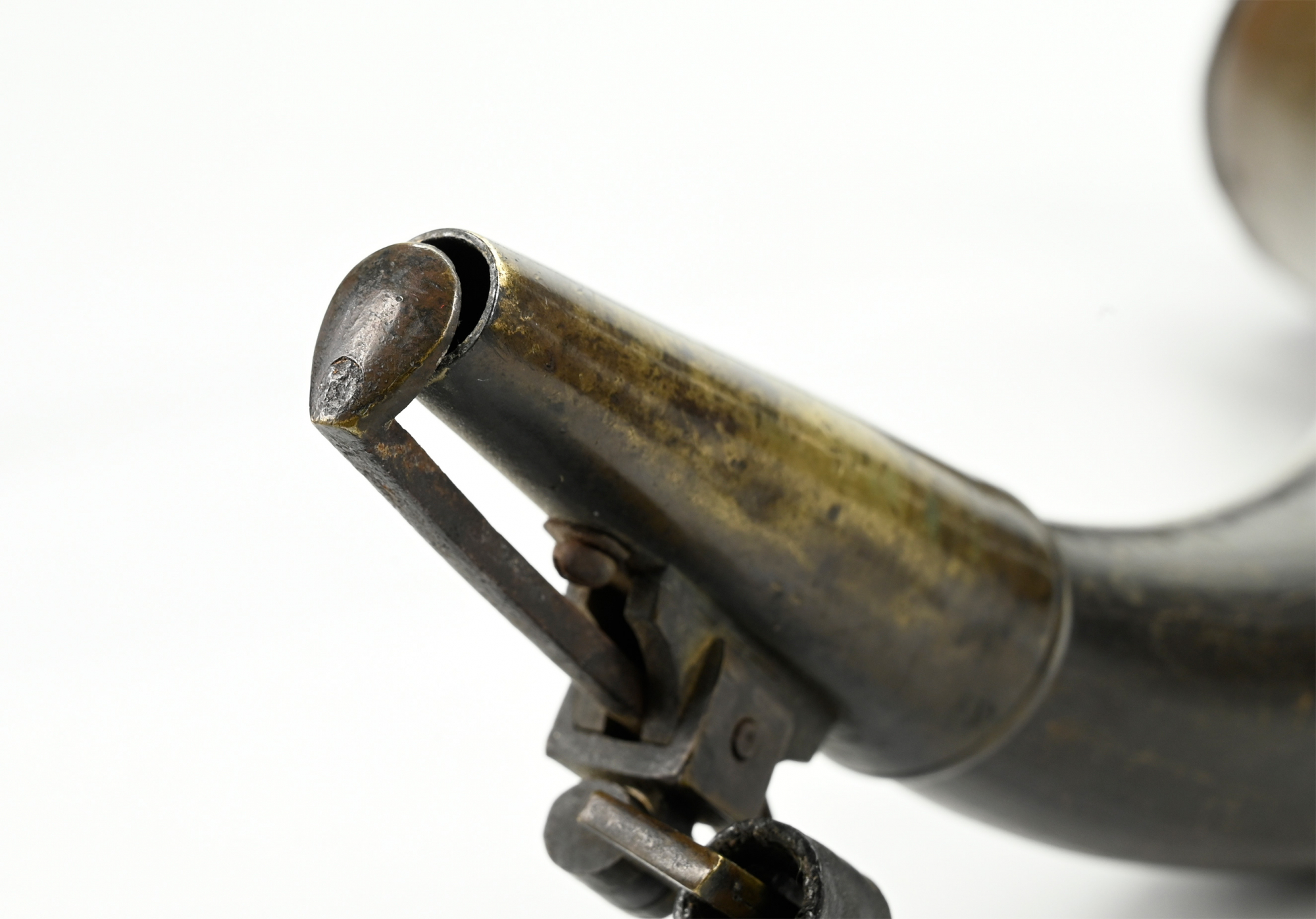
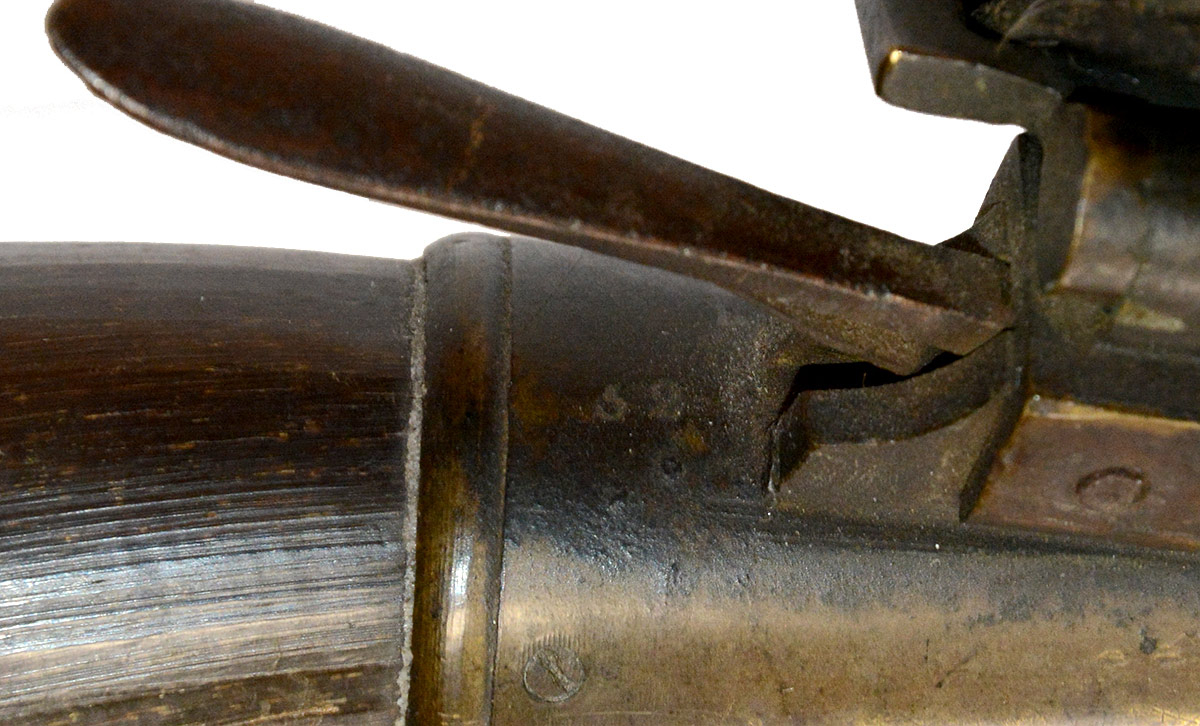
$1,295.00 SOLD
Quantity Available: None
Item Code: 1142-39
This pattern of artillery priming horn with rectangular carrying loop made integral with its brass spout mechanism is illustrated in Mordecai’s “Artillery for the United States Land Service,” begun in 1839, authorized in 1847, and approved in August 1849 though, ironically, it had been removed from the Ordnance Department’s List of Equipments a few months earlier in favor of the exclusive use of percussion locks with primers, and the use of “fiction-tubes,” which were standard by the time of the Civil War as “friction primers.” During the Mexican War, however, friction primers were used only for mountain howitzers while other guns used a percussion lock using the lanyard to actuate a heavy hammer that would strike a primer placed in the vent. That does not mean however, these priming horns were laid aside. The hammers on the percussion locks were liable to being blown back by gases from the vent and even those designed slide out of the way after striking the primer could so disfigure the metal around the vent that it became impossible to insert the primers or even a priming wire. In 1852 Braxton Bragg recalled that at the Battle of Buena Vista gunners in Sherman’s battery had such a problem that they resorted to port-fires, which implies uses of priming horns and powder.
This is a good example of one these scarce horns. The carrying strap has been replaced for display, but is correct in having one end sewn into the rectangular bracket at the front and the other sewn around the long extension of the wood base plug. The bases were lathe turned and fitted to the individual horns since sizes would differ slightly. This shows two grooves around the outer edge and two more around the fill hole. The base is dished, to make refilling easier, showing wear to the lower surface indicating use, and better color on the higher edges of the rim. The plug matches, but is a replacement and lacks threading. The base shows one deep ding to the edge and the horn has a corresponding crack and small chip just below, but the tacks are in place and the base is secure. The horn shows a slightly darker band around it at this point indicating the damage occurred during its period of use and was repaired by sewn a strip of leather around it.
The body has nice surface and color, transitioning from a creamy brown at the bottom to a darker brown near the spout, which has a convex band at the base, its screws in place, and a nice aged patina. Fred Gaede’s 2002/3 MCH article on this pattern notes that none of the “relatively few” examples of this pattern are marked. We do note, however, a very small “52” stamped on the brass spout near the collar edge, below the lever.
This general pattern, with a brass spout, dates back to the 18th century, though Mordecai also illustrates a horn with a simple wood plug for the spout as well. Those brass spouts tend to be simpler spring-lever patterns with loops for a shoulder cord in the horn itself or using a separate ring attached to the base of the spout. Nor does there seem a way of distinguishing navy from army priming horns. Gilkerson, Borders Away, Vol. 2, compounds the problem, illustrating one of these horns that he classifies as naval, but as early as the War of 1812. Use of this pattern horn by navy as well as army gun crews seems very possible, though the integral belt loop strikes us as later. In any case, it is definitely one of the patterns illustrated by Mordecai for army use and would fit an artillery display covering up through 1848 and the Mexican War. We recommend Fred Gaede’s articles in both the Military Collector and Historian on the horns and his work on artillery gun locks in the American Society of Arms Collectors, both of which we have used. [sr] [ph:m/L]
~~~~~~~~~~~~~~~~~~~~~~~~~~~~~~~~~~~
THIS ITEM, AS WITH ALL OTHER ITEMS AVAILABLE ON OUR WEB SITE,
MAY BE PURCHASED THROUGH OUR LAYAWAY PROGRAM.
CLICK HERE FOR OUR POLICIES AND TERMS.
THANK YOU!
Inquire About 1840s U.S. ARTILLERY PRIMING HORN
Most Popular
Historical Firearms Stolen From The National Civil War Museum In Harrisburg, Pa »
Theft From Gravesite Of Gen. John Reynolds »
Selection Of Unframed Prints By Don Troiani »
Fine Condition Brass Infantry Bugle Insignia »
British Imported, Confederate Used Bayonet »
Scarce New Model 1865 Sharps Still In Percussion Near Factory New »
featured item
RARE PHILADELPHIA RESERVE BRIGADE CARTRIDGE BOX PLATE
This is a very good example of a very scarce plate. See O’Donnell and Campbell Plate 588 for a parallel example and commentary. This retains a very good edge and detail to the raised design on the face, with good surface on the reverse with the… (2025-779). Learn More »


